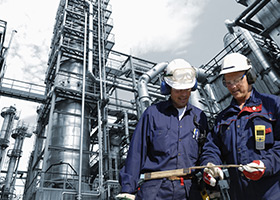Scantec researches the possible reasons that may cause a non- thermal comfort, using modern equipments and studying how to solve the problems suggesting any improvements.
Thanks to Blower door test it is possible to evaluate the air tightness of a building. Thanks to infrared thermography it is possible to build a map of heat distribution.
Thermal comfort is a particular condition where a person is in balance with the surrounding environment. This statistical value is subjective because people are not all equal and they don’t feel the same psycho and physical conditions.
There are many parameters that contribute to the evaluation of the welfare of an environment, they may be:
- The thermal comfort linked to the temperature of the environment, its isolation and air circulation;
- The wellbeing hygrometric due to the presence of moisture in the environment;
- The psychological wellbeing tied to a place of safety;
- The visual lighting wellbeing related of a place;
- The olfactory wellbeing related to air quality;
- The acoustic well-being related to the noise of the place.
There are other parameters that contribute on wellness like: activity, the type of clothing, age, sex and state of health of the person.
The knowledge of the value of this parameters allows to study new design methodologies to improve thermal building comfort. The reference standard (UNI EN ISO 7730), involves the use of two indexes for the definition of thermal comfort: the PMV (predicted mean vote) and PPD (predicted percentage of dissatisfied).
PMV index covers a range from -3 (sensation of very cold) to +3 (sensation of very hot).
Each person has a different sensation of perception, for example: if a person feels a room as cold, another person may feel the same room as pleasant.
This means that the PMV index isn’t an absolute value of the whole examined sample, but it is an average value of the various responses.
The second index, PPD, evaluates the percentage of dissatisfaction. A person may be dissatisfied due to many reasons, the most important parameters of local non comfort are:
- Air currents, due to the local air temperature,
- Thermal radiation of surfaces,
- Vertical temperature different perceived between head and ankles,
- Floors temperature or too low or too high.


